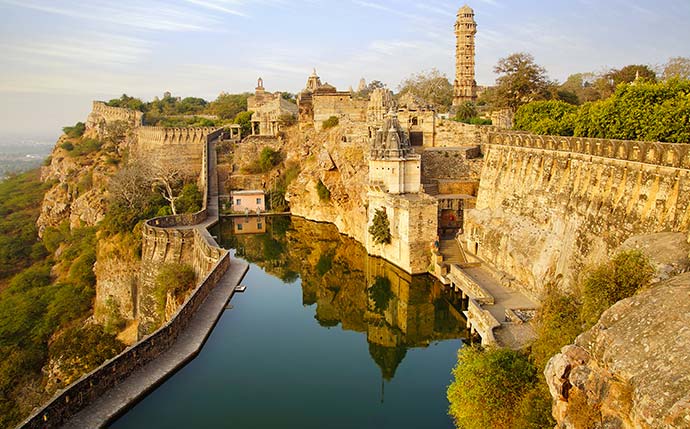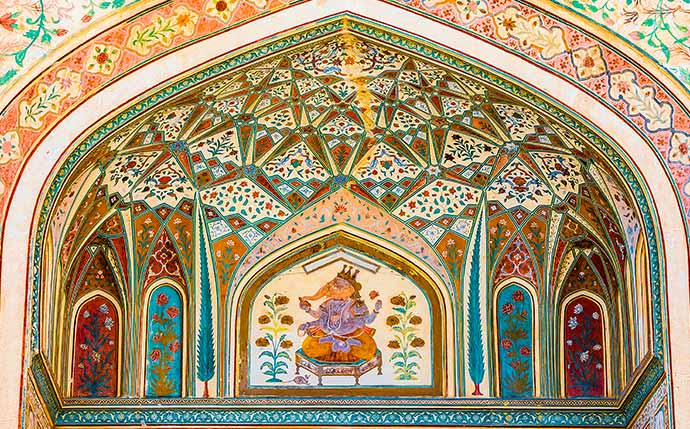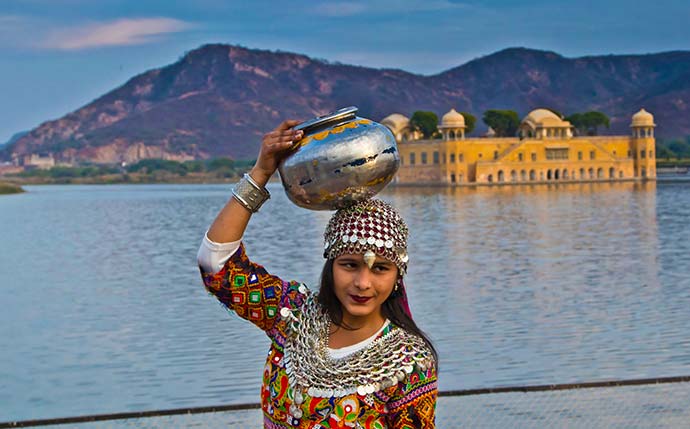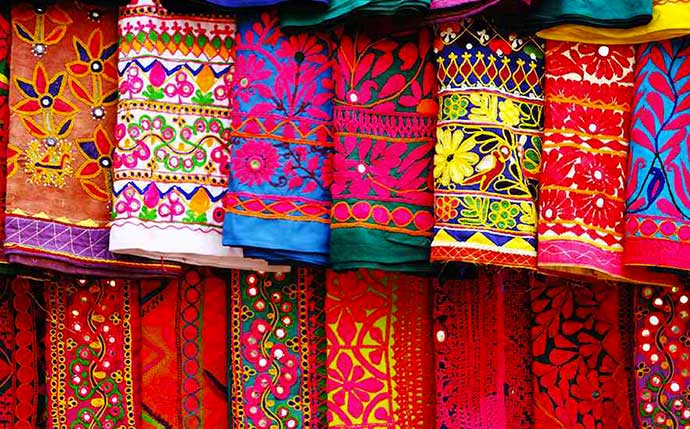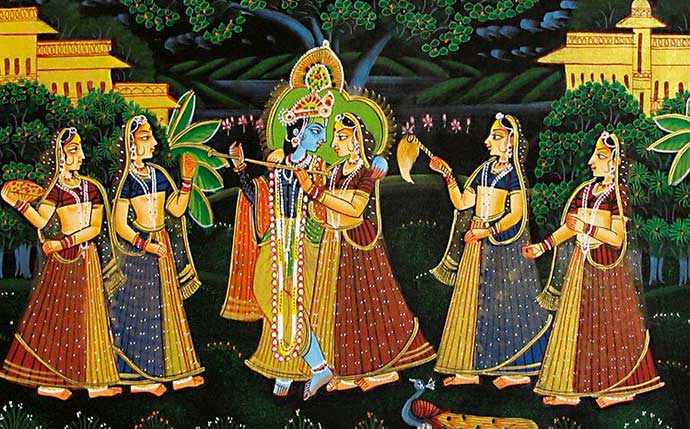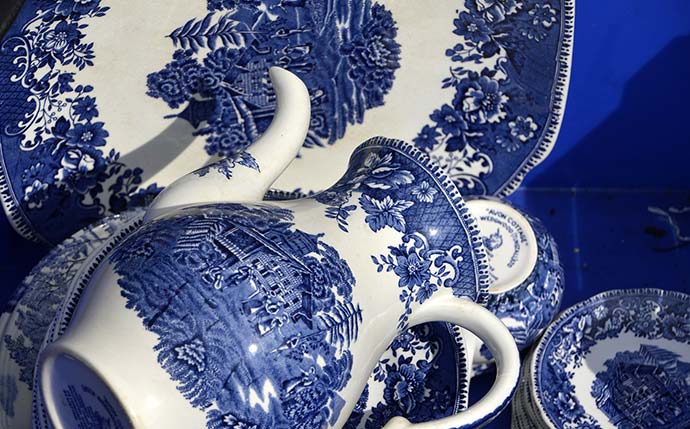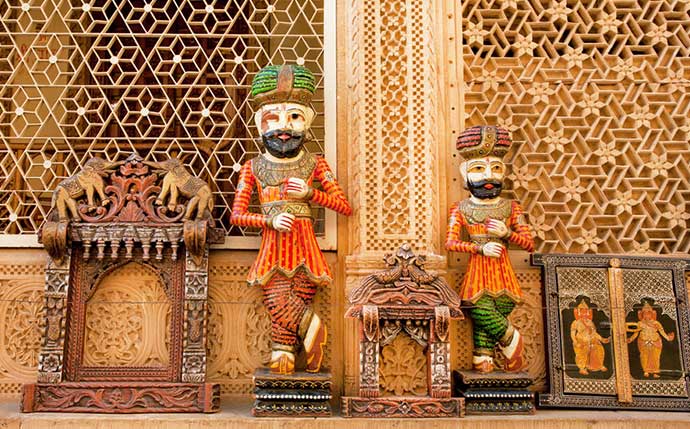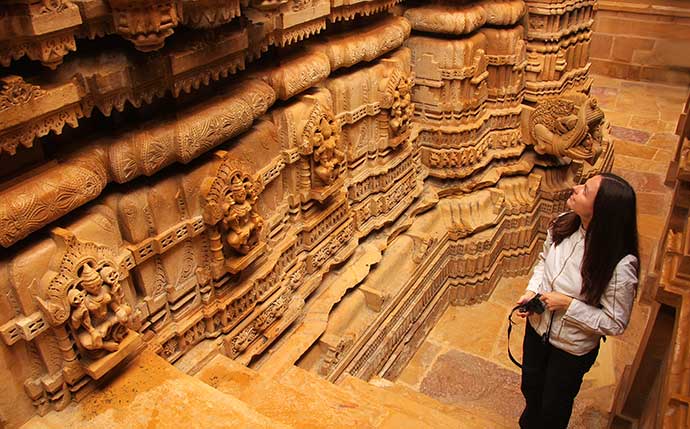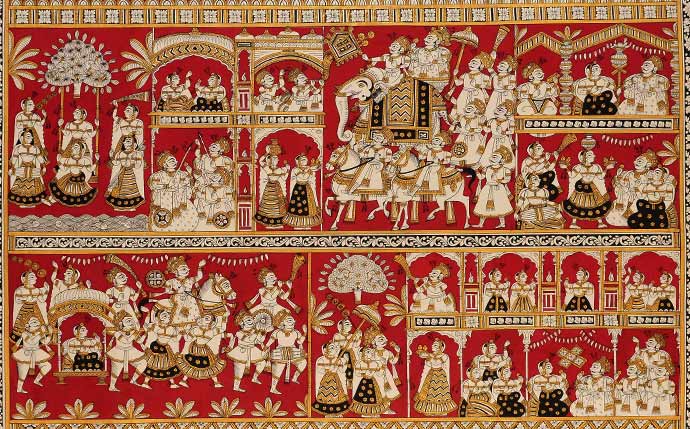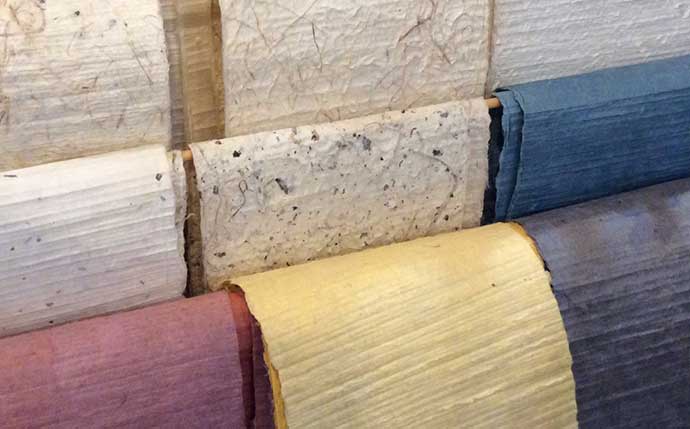You Can’t Live an Indian Life without a saree - 4 different saree you should know about!!
City Of Joy – Kolkata yes we are now talking about the tant saree which is famous in all over West Bengal. It is originally made from Bengal cotton handloom, it is also known as taant, tat, taat . This saree is not only worn by west Bengals but also women in Bangladesh is also fond of tant saree. This saree is has a speciality as it is light as airy texture and very suitable for the warm weather. These saree has a thick border and decorative pallu and is decorated by floral pattern.

BACKGROUND –
The word “Tant” indicate the handloom in Bengal that are used weave cotton garments like saree, dhoti and other garments. the background of this saree took place in the 15th century in shantipur.
The art gave wave during the Mughal rule 16th – 18th century when it became an extreme favourite among Muslim and jamdani weaving. This beautiful art continued during the British rule and decades before independence. After the partition of Bengal in 1947, many weavers from Bangladesh migrated to India and started living in neighbouring town shantipur, now it became a new home for Tangail weavers of Bangladesh. today both Bengalis and Bangladeshi weaver are well known for the varieties of tant saree.
WEAVING TECHNIQUE –
- A massive quantity of cotton threads comes from the mill are first washed to remove any chemicals, dried in the sun, bleached and again dried.
- Then they are put in boiling water which contains colour to dye them.
- After this, they are then starched and processed some more times to make then stronger and subtler. The threads are wound on bamboo drums for weaving.
- Every saree has a design on its border, pallu and body . These design made by the artist on a soft card sheet by perforating them which are then put up from the loom.
- The simplest saree takes about 10- 12 hours to weave, and saree which have complex design takes 5-6 days to get complete.
State Of Jewels – Gujarat, which is famous for bandhani work derived from the Hindi/Sanskrit word “ bandhna” and “bandha”, which means tying or to tie. Traditionally in India tie and dye art known as bandhani. According to the design and motifs each pattern has its special significance.
BACKGROUND –
It is an ancient practice done by people. People used the technique of picking the cloth with fingernails and tying before dying, this was first found in Indus valley civilization, back to 4000 B.C. even the Buddhist painting, and Ajanta caves have bandhani design in it.
MAKING PROCESS –
- Here the selection of cloth plays an important role. The artist starts with the unbleached white fabric.
- Then they have block printing design in other words it is senticels for printing on saree they give impressing by designed blocked on saree
- Later they grab some amount of cloth and tie with thread tightly, they also use some kinds of pebbles, motis , stones to give design to the saree.
- Then they dip the cloth into normal water to soak the saree so that colour can easily stick to the cloth.
- After this, they put the saree in the boiling water which contains salt and colour.
- Again they put the saree in the cold water and at last they dry the saree. And after untying you will find beautiful designs on saree.
State of Caves – Maharashtra. Every bride in Maharashtra dream to wear paithani saree at her wedding, one of the most beautiful saree in India. Paithani gives the reflection of rich Marathi culture and tradition. Paithani is woven with very fine silk which makes them one of the richest saree in India.
BACKGROUND –
Paithani is extracted more than the 2000 year back from statvahana dynasty. it is said that paithani is originated from the city called pratishan now it is known as paithan. At that time paithan was the centre of silk and zari ( gold yarn) and they even exported cotton and silk to the roman empire. So this is how paithani gots its name.
MAKING PROCESS –
- At first pallu or padar of paithani is weaved it is either woven either with zari work or silk warp. Traditionally zari work has silver coated with wash gold. Pallu is designed with akruti, asawali, banddimore etc.
- Next step is to weave its body. The body has bordered on the edges which are handwoven by gold and silver zari. As the border is made by gold zari body also has floral design and zari work is done.
- After all the zari work is done, it is polished with a mixture of water and gum to give saree a stiff texture. They also used methi and jaggery used in the mixture.
- They use various colours of bana and tana to get colours of the paithani saree. Tana bana means a mixture of two colours to give a single colour. ex- blue bana and red tana will give a shade of purple. This is how colour is given to paithani. After this, a perfect paithani is made.
State Of Temples – Tamil Nadu, kanjeevaram got its name from a village Kanchipuram. This saree owns thick fabric and dark shades of colours mixed with hints of gold. Women in India love to wear saree during festivals, weddings, occasion and celebrations then kanjeevaram is the best outfit to look classy.
BACKGROUND –
The history of kanjeevaram silk saree started from Hindu mythology. It is said that Kanchi silk weaver is descendants of sage Makanda, who was considered to be the best weaver. It is considered that two weaving communities from Andhra Pradesh, the devangas and the saligars came to Kanchipuram. As we know the city is full of temples and weaver cleverly used temples’ architecture in kanjeevaram saree to give details.
MAKING PROCESS –
- Mulberry silk is used to weave Kanjeevaram saree and the gold, silver zari which is used in the edges of the saree comes from Gujarat.
- Silk threads then dipped into rice water and dried under the sun to make the texture of silk thick and stiff.
- This silk thread is interlocked within a thin silver wire and woven
with the help of golden thread to complete the process. - To weave this fabric a wrap frame is used which has approx of 60 holes, in which there are 240 threads in the warp and 250 to 3000 threads in the weft.
- Saree is popular for vibrant colour and impressive designs which borrowed from designs of temples.
- Usually, weaver weaves pallu and body separately and they are pretty different from each other and later than are interlocked by pinti which is a zig-zag pattern where pallu meets the body of the saree. This is how a kanjeevaram saree is made.












